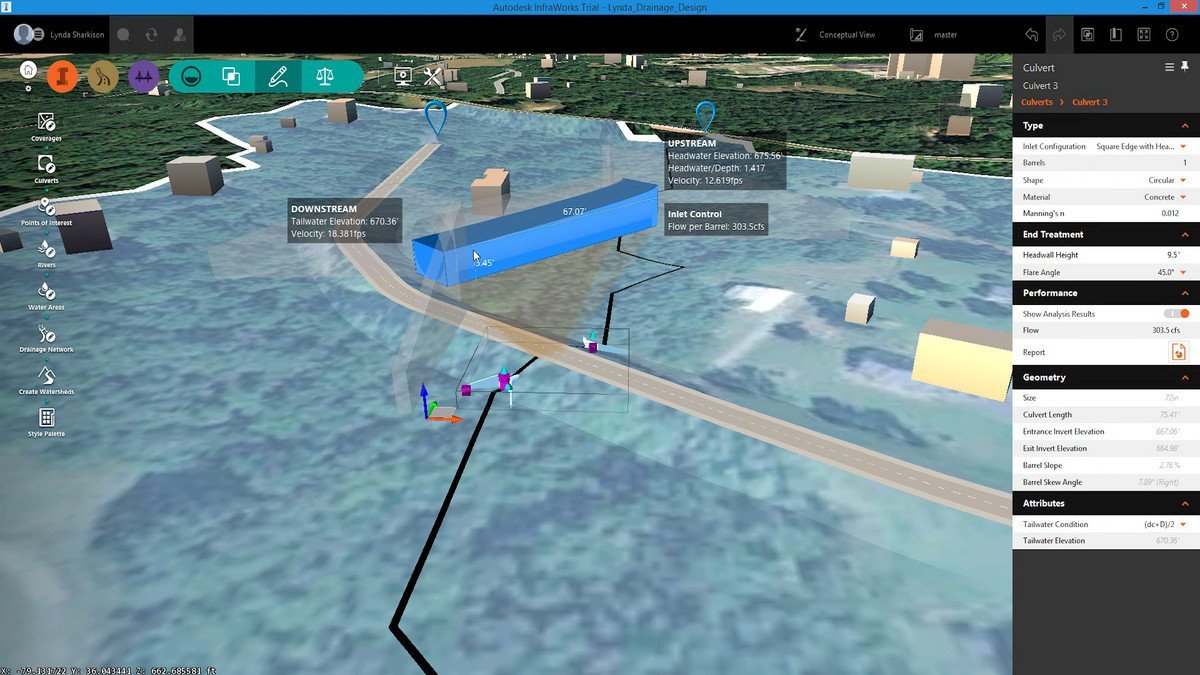As our cities continue to grow and face the challenges of climate change, infrastructure design has become a vital area of focus. One aspect of infrastructure design that is often overlooked is drainage systems. Effective drainage systems are crucial for maintaining the safety and health of our communities, and ensuring that our cities are able to adapt to the changing climate.
In recent years, the role of drainage software in infrastructure design has become increasingly important. This software allows engineers and designers to create complex drainage systems that are tailored to the specific needs of each location.
By using advanced algorithms and modeling tools, drainage software can help to optimize drainage systems for maximum efficiency and cost-effectiveness. Furthermore, drainage software can help to identify potential issues before they arise and mitigate the impact of flooding and other disasters.
Here, we will explore the ways in which drainage software is revolutionizing infrastructure design, and discuss its potential to shape the future of our cities.
Streamlined design with drainage software
The integration of drainage software into infrastructure design has revolutionized the way engineers approach the challenges of managing water flow. One of the key benefits of this software is its ability to streamline the design process by providing a comprehensive view of the project and its drainage requirements.
The use of this software allows engineers to assess the impact of different design choices on drainage and stormwater management, which can save time and reduce costs associated with potential design flaws.
Additionally, this software provides a more accurate analysis of the project’s drainage needs, which can lead to more effective and sustainable solutions.
The streamlined design process made possible by drainage software is an essential tool in achieving optimal infrastructure design.
Improved accuracy and efficiency
One of the key benefits of using drainage software for infrastructure design is improved accuracy and efficiency. Traditional manual methods of design and analysis can be time-consuming, error-prone and require significant expertise to ensure accuracy.
However, with the use of drainage software, designers can quickly and accurately model complex drainage systems and analyze the impact of different design options. The software can also provide real-time feedback on design changes, allowing designers to make informed decisions and rapidly iterate through different design scenarios.
Overall, the improved accuracy and efficiency provided by the company https://www.softwarerepublic.com/ drainage software can help to reduce costs and accelerate project timelines, while also improving the quality and safety of infrastructure design.
Enhanced collaboration and communication
Enhanced collaboration and communication are essential components of any successful infrastructure design project. Drainage software can revolutionize the way teams collaborate and communicate, allowing for more efficient and effective workflows.
With the ability to share data and designs in real-time, multiple stakeholders can work together to ensure that all aspects of the project are taken into account. This can lead to better decision-making and more accurate designs. Additionally, communication can be improved through the use of features such as commenting and annotation, which allow for more detailed discussions and feedback.
With enhanced collaboration and communication, infrastructure design projects can be completed with greater speed, accuracy, and success.
Increased project sustainability and resilience
One of the key benefits of utilizing drainage software in infrastructure design is the increased project sustainability and resilience it provides. By incorporating advanced modeling techniques, engineers and designers are able to create drainage systems that are more efficient, effective, and sustainable.
This leads to a reduction in the overall environmental impact of the project and can help to mitigate potential long-term damage caused by severe weather events or other natural disasters. By analyzing the potential impacts of climate change and incorporating them into the design process, drainage software can help to create infrastructure that is more resilient and adaptable to changing conditions.
This not only ensures a safer and more sustainable future for communities, but also helps to protect the investments made in infrastructure projects for years to come. Overall, the use of drainage software in infrastructure design represents a significant step forward in the creation of more sustainable and resilient infrastructure systems.
Future-proofing infrastructure with technology
As infrastructure continues to age and cities grow, the need to future-proof infrastructure becomes more critical. Technology is playing an increasingly significant role in ensuring that infrastructure is not only resilient but also adaptable to changing conditions. In the world of drainage design, software is revolutionizing the way engineers approach the design of stormwater drainage systems.
Software tools like hydrological and hydraulic modeling software make it possible to simulate the effects of climate change, extreme weather events, and urbanization on drainage infrastructure. By incorporating these tools into the design process, engineers can create drainage systems that are not only efficient and effective but also future-proofed to handle the challenges of tomorrow.
The ability to identify potential problems before they occur can help save time and money in the long run, making the use of drainage software an essential tool in infrastructure design.
To sum up, drainage software has revolutionized the way engineers and designers approach infrastructure design. By utilizing advanced algorithms and modeling techniques, these tools provide accurate and efficient solutions for complex drainage systems.
The benefits are clear: faster design iterations, reduced costs, improved sustainability, and enhanced safety. As technology continues to evolve, we can expect even more sophisticated features and capabilities from drainage software.
It is clear that these tools play a critical role in the future of infrastructure design, and engineers and designers should embrace them as essential components of their toolkit.
